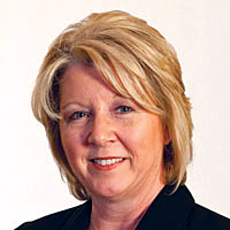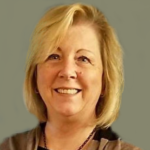
There has been a lot going on in the long-term care industry over the last five years or so. Change has been at a rate that has not been seen before. Changing reimbursement models, survey process, interpretive guidelines, point of care delivery, and increased focus on outcomes and resident experience are just a few of the highlights. We used to be on some solid ground (aka status quo), but today it feels like just as we start getting our footing on what we believe is solid ground, we realize that we are actually on sand. And it is shifting again.
The recent buzzword being tossed about is “disruptive.” Disruptive technologies are those that upend the status quo for something new. Remember the typewriter? Some of us do, but the computer displaced the typewriter. How about the car phone – a phone that was actually installed in the car! We saw pagers and PDAs replaced by cell phones, and those replaced by smartphones. We no longer have to carry cameras around with us since our smartphones can produce incredible images. This is what is going on in healthcare today. Not from a technology perspective, but from a shift in the sands of how care is being provided, where it is being provided, and how the industry is getting paid for it. How does this translate to your business? Let’s look at each of these.
As the baby boomers age, they are very vocal in how they want to spend their latter years and more specifically how they do NOT want to spend them. They do not desire to be in a facility, but prefer to age at home. Not a whole lot new with that, however, the start of non-medical home care being funded by Medicare Advantage programs is going to have a big impact on helping this happen. Many people could not afford to pay out of pocket for non-medical home care services and therefore had limited options to age in place. With MA programs now being able to manage an individual’s care in the best and most cost-effective way for that person, we may start to see a shift in nursing facility admissions. The need for nursing facilities will still be there, but the thinking right now is they will be shorter time periods as people age in place longer than in the past.
There has been a lot of discussion on how providers will be paid as we move forward. HHS Secretary Alex Azar recently stated, “value is not something that can be determined by arbitrary or central planners.” The Patient Driven Payment model that is getting ready to roll out and will provide payment based on quality of care, is something that has been a long time coming. For the first time, there appears to be an actual desire to find a solution that pays providers for the quality of care provided and outcomes achieved for the individual, and not based on a cookie cutter payment solution. This encourages us to personalize the care for each person we care for.
What about how you are looking at your business? Are you treating it as status quo? Are you looking only at the care and services you provide, or are you looking at the bigger picture, focusing on what consumers are looking for and how/where you might fit in? Assisted living operators are in a great position to provide the lifestyle boomers desire while looking to the future to prepare to meet a higher acuity population. Nursing facilities can do this as well. Boomers are looking for more independence, access to technology and the internet.
Are you prepared for this?
Theodore Levitt wrote an article “Marketing Myopia” (2014 Harvard Business School Publishing) that talks about the pitfalls of keeping too tight of a focus on your marketing efforts. Consider the following:
- There is no such thing as a growth market
- Your product is not your business
- It is critical to focus on customers’ needs, not your capabilities
- When you hear these things, how does that make you feel? We all get used to the status quo and continue forward in “the way we have always done things.” The reality is that we need to look beyond what we do today and think about what tomorrow could look like. Here are a few things to think about:
-
How you could join with other organizations to help keep people in their homes?
-
Have you thought about what your potential to provide services in the home might look like?
-
Can you deliver meals to people in their homes?
-
Is it realistic to start a non-medical personal care branch as part of your existing portfolio?
-
Can you visit community centers to provide wellness information?
-
Are you able to your therapy space as a gym for community seniors?
-
Can you hold yoga classes for seniors in your area?
-
Have you thought about creating an app with information, surveys, access to services such as any partner you may have (#1 above), or community services available?
Some of these may not be realistic options for your organization as you move forward, but they are mentioned to hopefully spark your mind to start thinking in a different way. If you believe your business is to provide certain services to certain people, be prepared for someone to come up from behind and totally disrupt the way business will be conducted. That will put you on defense instead of offense, scrambling to catch up. Why shouldn’t you be that disruptor? After all, the business you are in no matter the setting is taking care of people. As we change and move forward, what does taking care of people really look like to you?
As a product manager, I am talking to the market and finding out what they need, and when those needs change, what that looks like. Ronald Reagan once said “Status quo, you know, is Latin for ‘the mess we’re in.’” If we think that we are doing the right thing by maintaining the status quo, we will remain there, never stretching and growing. So start getting disruptive! Get out there and talk to your market! Talk to people that you serve in and out of your organizations and those that you don’t serve yet to find out what they are looking for and how you could make that happen!




